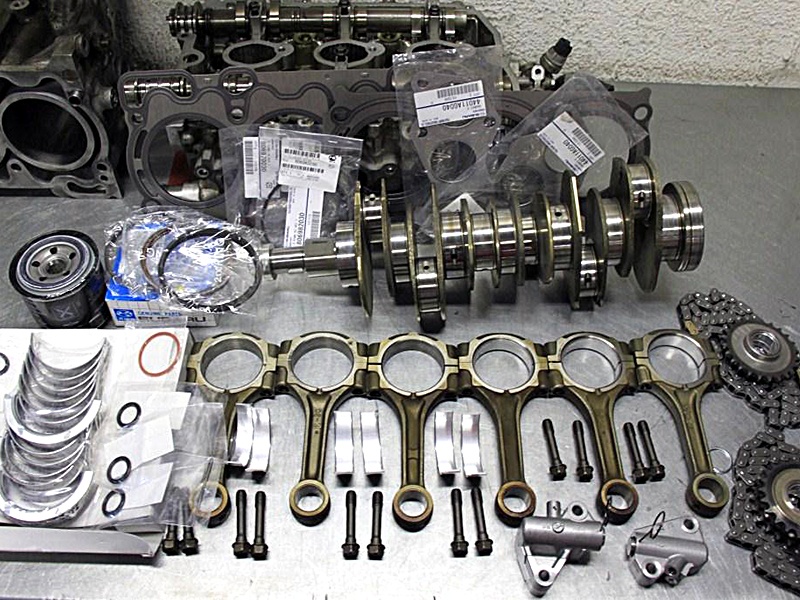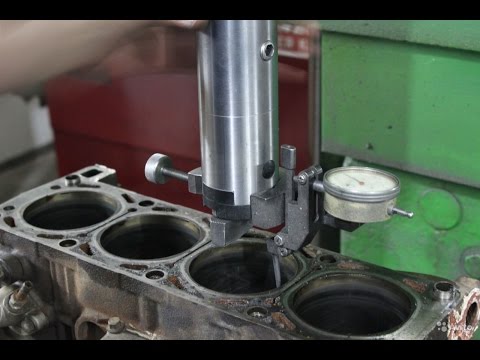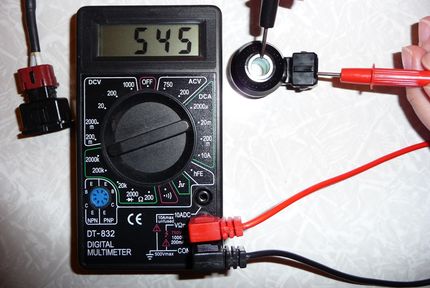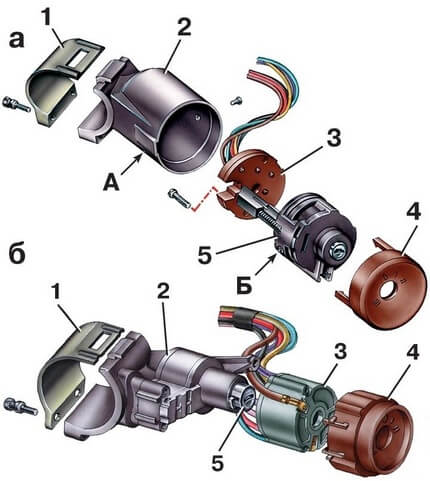
ICE overhaul
Content
An internal combustion engine overhaul is a process during which the engine as a whole and all its components, namely, are brought to a condition that is as close as possible to the state in which the internal combustion engine left the factory. The concept of such a repair includes: disassembling and cleaning the internal combustion engine, checking all components for defects, replacing if necessary, repairing and bringing the crankshaft, cylinder block, fuel supply systems, oil lubrication and cooling systems to perfect condition, repair of the crank mechanism.
Do not confuse such a repair with a procedure such as a bulkhead of an internal combustion engine. It includes only disassembly and replacement of those elements that have become unusable. Engine overhaul is done when low compression and power loss detectedarising from the natural mileage of the vehicle.
Causes and signs of approaching repairs
Let us briefly list the reasons and signs by which the driver can determine that it is necessary to overhaul the internal combustion engine. So the signs are:
- The occurrence of knocking in the KShM (crank mechanism).
- Reduced oil pressure (this is signaled by a lamp on the dashboard). However, keep in mind that a one-time reduction in pressure does not mean that you need a "capital". However, if the decrease appears regularly and after a short time, then additional diagnostics are needed.
- Increased oil consumption. Here the same logic as in the previous paragraph. If you fill in oil very often, there is a possibility that you need to overhaul the internal combustion engine.
Oil pressure reduction lamp on the dashboard
- Exhaust gases are dark blue.
- Reduced compression. Its value is measured using special instruments.
Now consider the reasons for which the problems described above appear.
- Coking of oil channels, significant contamination, aging oil or the use of poor quality.
- Failure or significant wear of the plain bearings in the crankshaft and / or crankshaft liners.
- A drop in compression can be caused by worn piston rings, burnt valves or a gasket in the main cylinder block.
- Increased oil consumption appears for a variety of reasons. This may be a decrease in the elasticity of the valve stem seals or clogging of the oil scraper piston rings with burnt oil.
Now let's briefly dwell on the actions that are useful for each driver to prevent frequent repairs of the internal combustion engine and extend the period between the next "capitals".
- Regularly check the level and condition of engine oil. replace it in accordance with the manufacturer's recommendations, and if it is in poor condition, more often.
- Avoid engine overheating. Including monitor the condition of the cooling system as a whole and its individual components, namely. Including regularly check the condition and level of the coolant, and top up if necessary.
- Use quality fuel. Bad gasoline or diesel fuel contains many harmful impurities that remain on the surface of individual parts of the engine during combustion, accelerating its wear.
- Do not overload the engine. namely, do not carry loads, the mass of which exceeds that specified by the car manufacturer, including not towing heavy trailers.
- Avoid prolonged idling. At the same time, the rate of carbon deposits on the surface of the cylinders and candles increases.
- Maintain a relaxed driving style. Try to avoid sudden acceleration and deceleration, operation of the internal combustion engine at high speeds (in the red zone of the tachometer), frequent gear changes, and so on.
Engine overhaul stages
The overhaul of the internal combustion engine can be divided into several stages:
First. Dismantling the internal combustion engine, its disassembly and cleaning of all components separately.
Second. Diagnostics and identification of damages on all parts, determination of the degree of their wear.
The third. Search for defects in internal combustion engine parts. This stage can be divided into separate procedures:
- determination of the presence of cracks on the engine block;
- measurement of the corresponding gaps;
- troubleshooting of the crankshaft;
- measurement of the geometry of all rubbing parts, comparison of dimensions with factory ones and determination of deviations from the norm.
Fourth. Cylinder head repair:
Removing carbon deposits from the cylinder head
- elimination of cracks;
- replacement or restoration of guide bushings;
- replacement or, if possible, restoration of chamfers of valve seats;
- selection and installation of new valve stem seals;
- replacement or restoration of the camshaft, valves, pushers.
Fifth. Cylinder Block Repair:
- boring, abrasive processing of cylinders and installation of new liners;
- elimination of cracks in the block;
- crankshaft niche repair;
- alignment of the mating plane.
Sixth. Repair and restoration of the crankshaft.
Crankshaft restoration
Seventh. Assembly and installation of internal combustion engines.
Eighth. Running in the internal combustion engine on a cold - long-term operation of the internal combustion engine at idle. This procedure allows you to get used to all the elements for a stable future operation of the internal combustion engine.
Ninth. The final stage of the overhaul is the adjustment of the following indicators:
- idle speed;
- the level of toxicity of exhaust gases (CO);
- ignition.
Engine overhaul cost in 2020
Many drivers are interested in the price of an internal combustion engine overhaul. Before moving on to the assessment of purchased materials and the cost of work, it should be clarified that prices for different models of machines will also be different. This is due to the natural difference in the cost of spare parts. In addition, a different amount of work can be performed. Therefore, everything is individual.
| Work in progress | Cost for VAZ 2101-2112 as of summer 2020 | Cost for foreign cars as of summer 2020 |
|---|---|---|
| Complete engine overhaul with removal | From 9500 to 12000 rubles | From 15000 rubles |
| Head Gasket Replacement | From 2500 to 4500 rubles | From 4600 rubles |
| Replacing the manifold gasket | From 1300 to 2200 rubles | From 2200 rubles |
| Replacing the pallet gasket | From 1000 to 2000 rubles | From 2100 rubles |
| Chain/belt replacement | From 1200 to 1800 rubles | From 1500 rubles |
| Replacing valve stem seals | From 1800 to 3500 rubles | From 2500 rubles |
| Block head repair | From 5000 to 7500 rubles | From 6000 rubles |
| Adjustment of valves | About 800 rubles | From 1000 rubles |
| Replacing the rear crankshaft oil seals | From 2500 to 3500 rubles | From 6500 rubles |
| Chain tightening | About 500 rubles | From 500 rubles |
| Replacing the engine support | About 500 rubles | From 800 rubles |
| Performance of control and diagnostic works | ||
| Diagnostics of the internal combustion engine with a scanner for errors, checking the current data of the operation of the internal combustion engine | About 850 rubles | |
| Compression test - 4/6/8 cylinder ICE | From 400/600/800 rubles | |
Remember that in some cases, overhaul will cost more than buying a new internal combustion engine. For example, if it is supposed to perform a large amount of work with the replacement of expensive spare parts. Be that as it may, this issue must be discussed and the cost calculated individually in each case.
Mileage and guarantees during overhaul
When is an engine overhaul required? You will find exact information only in the manual of your car. In general terms, we can answer this way: for domestic cars, the mileage before the completion of the corresponding repairs is about 150 thousand kilometers, for European foreign cars - about 200 thousand, and for the "Japanese" - 250 thousand.
With regard to the guarantee for the work performed, the point here is not only and not so much in the repair procedures, but in the quality of the spare parts used. In a nutshell, they must be guaranteed. Unfortunately, in our time to buy a frank marriage or a fake. Therefore, try to buy spare parts in stores that have the appropriate licenses, and preferably from trusted sellers. This will minimize the risks of buying low-quality goods, and, accordingly, increase the likelihood of compliance with the guarantee.

Performing a major overhaul
Currently, almost all service stations that perform overhauls of internal combustion engines give a guarantee for their work. usually, it is 20 ... 40 thousand kilometers. Although if the internal combustion engine is repaired well, then problems should not arise with significantly higher mileage. it must be remembered that after the overhaul of the internal combustion engine, it is most susceptible to new breakdowns due to the grinding of new parts and assemblies. Therefore, for the first 10 thousand kilometers, try to drive in a gentle mode, without sharp jerks, accelerations and not at high engine speeds.
Due to the fact that during the overhaul, the craftsmen have to perform many complex procedures, the time spent on it can be serious. For example:
- If the required spare part is not available at the service station and you need to wait for its delivery from abroad, then the repair period can stretch for 15 ... 20 or more days (largely depends on the delivery time of the desired part).
- In case of availability of the necessary parts, lack of equipment for the repair, the period may stretch for 5…8 days.
- If there is a major overhaul at the service station, it usually takes 3 ... 4 days, if there are no additional obstacles or difficulties.
It is advisable to discuss in advance with the masters not only the cost of repairs, but also the timing of its implementation. And it is better to conclude a formal contract that has legal force. This will save you from possible misunderstandings in the future.
Instead of a conclusion
Finally, I would like to bring the following axiom: the service life of an internal combustion engine directly depends on the service life of its individual elements. Foreign cars usually have a resource of 250-300 thousand kilometers, while domestic cars have only 150 thousand. in order for the internal combustion engine to work as long as possible without breakdowns, it is worth following the operating rules that were established by the manufacturer and carrying out regular maintenance.

